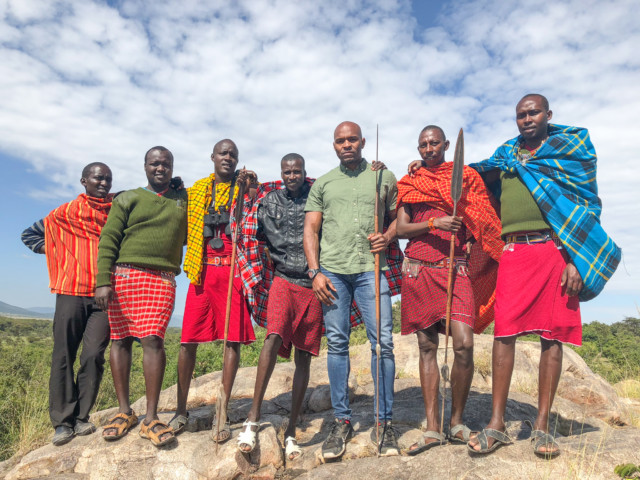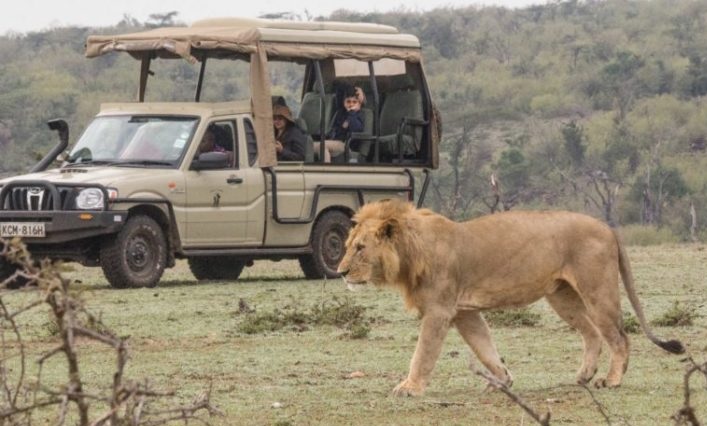
Paleontologists have established a direct link between modern birds and ancient dinosaurs. Porini Camps guest Clinton Richardson ponders this fact as he observes some of the hundreds of bird species found in Kenya’s wildlife conservancies …
* * * * * * * * * * * * * * * * * * * * * * * *
This series of blogs will take you on Clinton’s safari in Kenya as he travels from Atlanta (USA) to Nairobi National Park, Selenkay Conservancy (Amboseli), Ol Pejeta Conservancy (Laikipia) and Olare Motorogi Conservancy (Maasai Mara). Let’s join him on his journey as he shares his insights into the conservancies, Porini Camps and the people (and animals!) that he meets along the way. All images are from Clinton’s TrekPic.com photo site. Blog entries are from his Venture Moola blog at ReadJanus.com.
* * * * * * * * * * * * * * * * * * * * * * * *
Airing out her wings on a termite mound overlooking the vast grasslands of the Maasai Mara, this vulture repeats a process her distant ancestors practiced in this same spot. As we watched this afternoon, she walked and bounced back and forth across the mound surveying the plains while she aired out her wings.
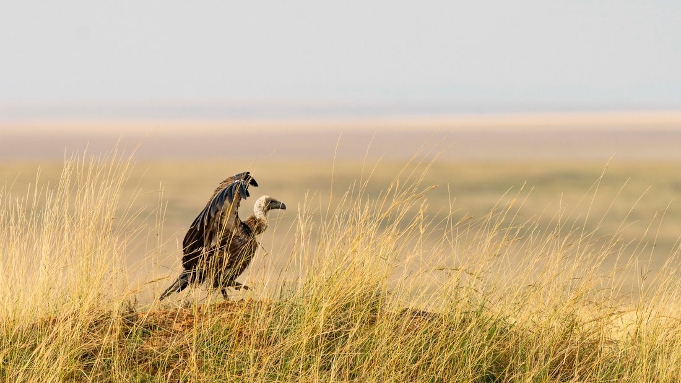
Vulture on the Maasai Mara
Modern paleontologists have firmly established a direct link between modern birds and ancient dinosaurs. They are part of the family. Some can draw a direct link to flying dinosaurs of the Cretaceous Period that ended some 65.5 million years ago. Others follow from dinosaurs who took flight only after the end of the Cretaceous Period.
If you finished school more than ten years ago, forget what you learned about dinosaurs. Modern scientists using tools undreamed of decades ago are unlocking secrets about dinosaurs at a rapid rate.
The unique breathing system of birds that enables them to extract oxygen as they inhale and exhale was developed by their dinosaur ancestors. How did grazing dinosaurs reach sizes unheard of today? You guessed it. Part of what enabled such grand sizes was the dinosaur’s more efficient breathing system still used today by birds.
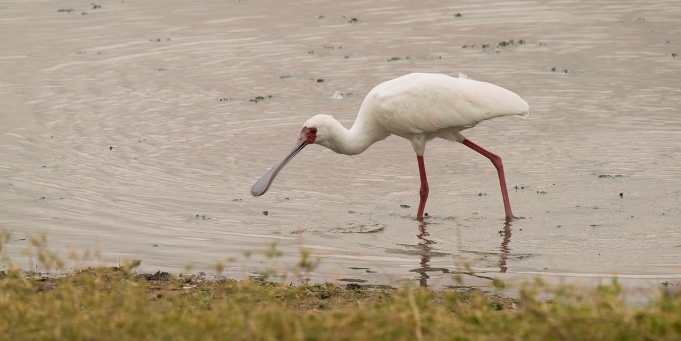
Spoonbill at Amboseli
But birds do not look like dinosaurs. Think again. Many dinosaurs, scholars now know, sported feathers of one sort or another. Even the giant T-Rex with teeth the size of railroad spikes had primitive feathers.
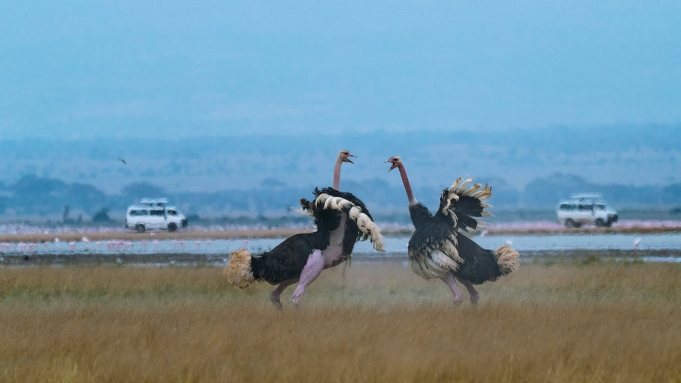
Fight Over a Girl
And if you think there are no worthy avian heirs to the ferocity of T-Rex think again. The common ostrich, shown above, has leg muscles and claws powerful enough to dispatch a lion.
But all dinosaurs were not T-Rex. For hundreds of millions of years, dinosaurs ruled the planet not by being fierce but by being adaptive and filling every available niche in the environment.
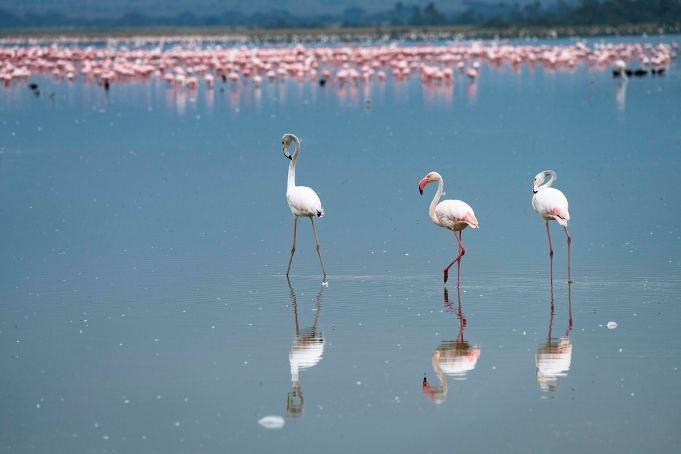
Flamingo at Amboseli
Which is why Kenya is the perfect place to connect with our modern dinosaurs. In Kenya, birds fill nearly every available niche including more than 1,100 different species. That is more species of bird in one country than in all of North America.
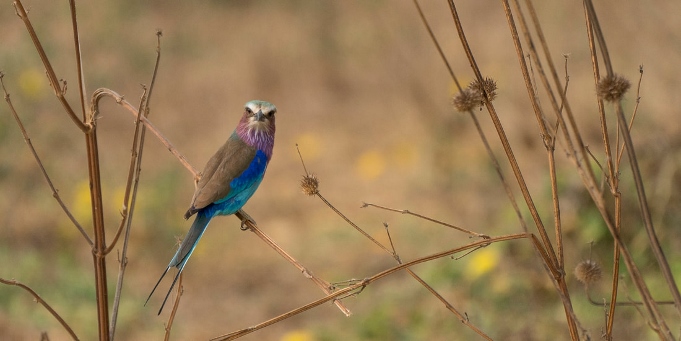
Lilac Breasted Roller on the Selenkay Conservancy
If you want to see dinosaurs, then this is the place to be. Everything from vultures to ostrich to spoonbill are here. So too are lilac breasted rollers, kori bustards, kingfishers, pelicans, secretary birds, eagles, hawks, Egyptian geese, and many more.
Here are just a few who crossed our path on Safari. Some will look familiar. Others will not.
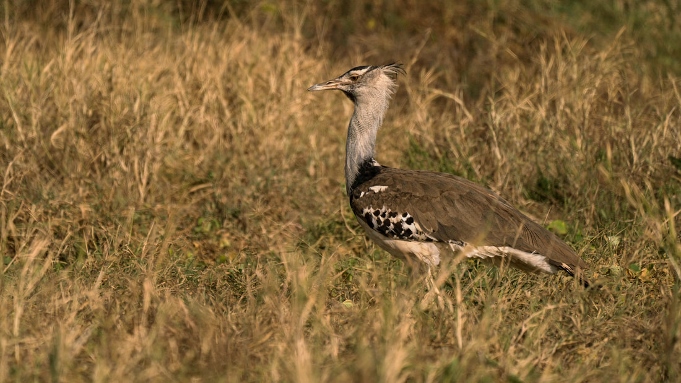
Kori Bustard at Selenkay
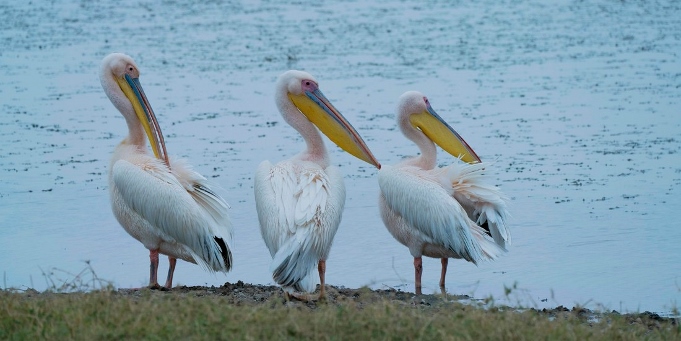
Pelicans at Amboseli
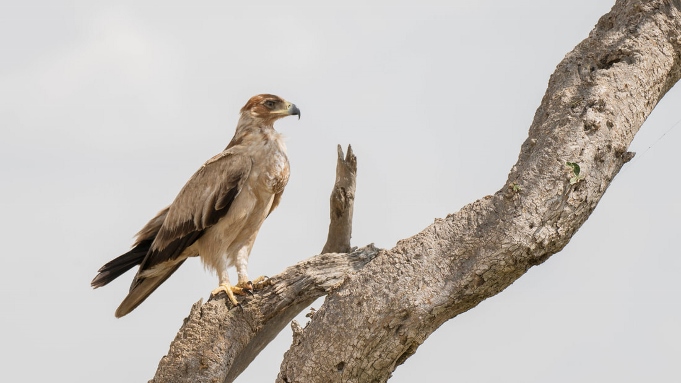
Tawny Eagle

Guinea Fowl at Nairobi NP
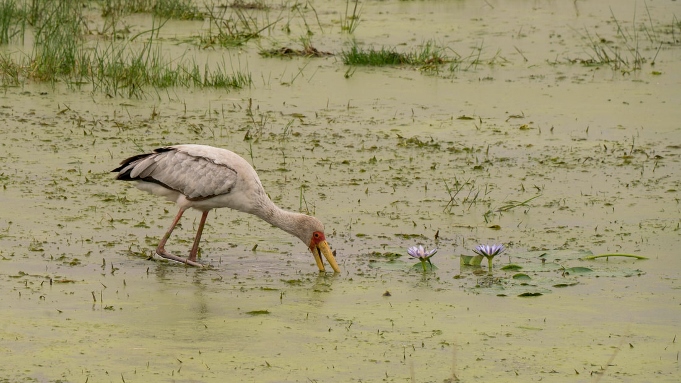
Feeding Stork in Amboseli
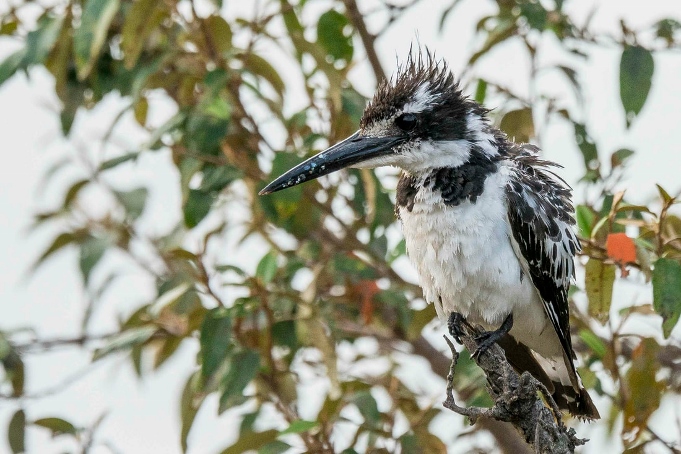
Kingfisher in the Maasai Mara
First published 28 Feb 2019. All photos and text are © Clinton Richardson. All images are from his galleries at TrekPic.com
About Clinton Richardson
Clinton Richardson has been writing and taking photographs for decades. His books include the critically acclaimed 5th edition Richardson’s Growth Company Guide 5.0 and the award-winning book about social media and ancient coins called Ancient Selfies. His images, including images taken on his trip, can be viewed at TrekPic.com. His Venture Moola blog can be viewed at Readjanus.com.
See Other Blogs in this Series:
- Safari Countdown: Prepping for Kenya
- Safari 1: The Hunt
- Safari 2: Off to Nairobi
- Safari 3: Tented Camps & Conservancies
- Safari 4: Passports in His Underpants
- Safari 5: Night Lions to Amboseli
- Safari 6: Amboseli to Selenkay
- Safari 7: Pooh on You
- Safari 8: Eaten by a Lion?
- Safari 9: The Maasai
- Safari 10: On the Move
- Safari 11: Crash on the Grass
- Safari 12: Sundowner Surprise
- Safari 13: Stalag Panzee
- Safari 14: Bump in the Night
- Safari 15: Dry Season Showers
- Safari 16: How Many Wives Would You Like to Have?
- Safari 17: Distracting His Highness
- Safari 18: How to Eat a Tree
- Safari 19: Hunting with Children
- Safari 20: Blue Jean Symphony
- Safari 21: African Nights
on Thursday 28th February 2019 at 06:17




